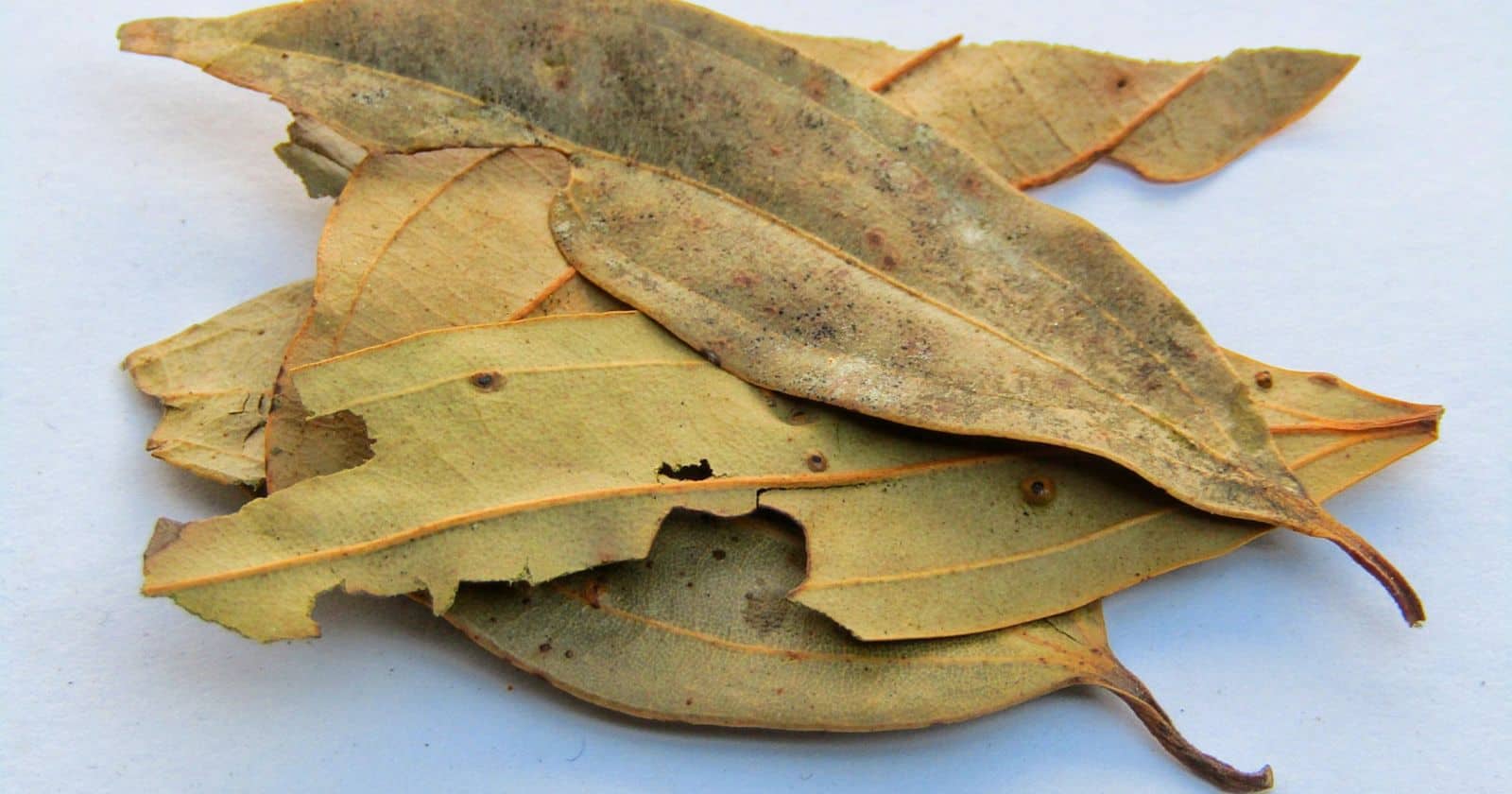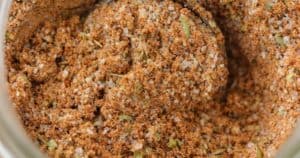Are you tired of using the same old spices in your dishes? Looking to add a new flavor to your cooking? Look no further than Indian bay leaf. This often-overlooked
Harvested from the Indian cassia tree, Indian bay leaves have a unique flavor and aroma that can take your dishes to the next level. In this article, we’ll explore the benefits and usage of Indian bay leaves in detail and provide some delicious recipes.
So, let’s dive in and discover the hidden gem that is the Indian bay leaf.
What is Indian Bay Leaf?
Indian bay leaf, or Tej Patta or Malabar leaf, is commonly used in Indian cuisine. Unlike the European Laurel Bay leaves, Indian bay leaves are derived from the Cinnamomum tamala tree indigenous to India.
These leaves possess unique aromatic and pungent flavors that add depth to Indian dishes. But what makes Indian bay leaves distinct from other types of bay leaves?
Firstly, Indian bay leaves are narrow and elongated, measuring 2 to 4 inches long. They have a shiny, dark green surface and a fragrant aroma, which intensifies when cooked.
Secondly, they have a more pungent taste than other bay leaves, with a woody, slightly minty flavor profile.
Lastly, Indian bay leaves are commonly used in rice dishes, soups, and curries.
The importance of Indian bay leaf in Indian cuisine cannot be overstated. The leaves contain essential oils, tannins, and flavonoids, attributed to their distinct aroma and flavor.
In addition, the essential oils in the leaves possess antibacterial and antimicrobial properties, making them useful as herbal remedies.
Indian bay leaves have a long and exciting history in India, where they are used as a culinary herb and have medicinal and spiritual significance. Moreover, they were believed to ward off evil spirits and offer divine protection. Traditional Ayurvedic medicine often uses them to treat respiratory problems, headaches, and digestive disorders.
The Unique Flavor and Aroma of Indian Bay Leaf
Have you ever tasted Indian bay leaf? Its flavor and aroma are unique and distinct from other types of bay leaves. Unlike European bay leaves, Indian bay leaves have a less woodsy and piney flavor profile. It has a sweet and spicy taste reminiscent of cinnamon, cloves, and cassia.
The fragrance of Indian bay leaf is also something to marvel at. It has a delicate cinnamon stick scent, yet it’s not overpowering. Drying out the leaves creates a more potent aroma for cooking. The leaves should be crushed before adding them to a dish for maximum benefits.
Cooking with Indian bay leaf brings out its flavor and aroma, making any dish flavorful and unique. Whether adding Indian bay leaf to a savory dish, soup, or sauce, its distinct taste and fragrance will undoubtedly make your dish unforgettable.
But did you know that Indian bay leaf has multiple health benefits as well? The leaves are rich in essential oils that contain anti-inflammatory, anti-bacterial, anti-fungal, and anti-viral properties.
Here are some of the health benefits of Indian bay leaf:
- It helps in controlling diabetes by regulating insulin levels.
- Indian bay leaf has a calming effect on the nervous system, which helps in reducing anxiety and promoting better sleep.
- It is beneficial for digestive ailments, such as bloating and constipation.
- Its essential oils help in relieving joint and muscle pain.
Benefits of Using Indian Bay Leaf in North Indian Cuisine
Some of the benefits of using Indian bay leaf in your cooking:
- Aids digestion: Bay leaves have enzymes that can help digest proteins and other nutrients in our food. They are accommodating in dishes heavy in spices and butter or ghee. Bay leaves can also treat digestive disorders like flatulence and heartburn.
- Promotes heart health: Bay leaves contain compounds that can help lower cholesterol levels, reducing the risk of heart disease.
- Boosts immunity: Indian bay leaf is a good source of vitamin C, an essential nutrient for the immune system. It also has anti-inflammatory properties that can help fight infections.
- Anti-cancer properties: Indian bay leaf contains anti-cancer compounds. They can help prevent the growth of cancer cells and reduce the risk of breast cancer.
- Reduces stress and anxiety: Burning Indian bay leaf can help reduce stress and anxiety. The aroma of the
spice can have a calming effect on the nervous system. - Treats respiratory problems: Indian bay leaf benefits those with respiratory problems like bronchitis and asthma. It can help remove mucus from the lungs and relieve congestion.
- Regulates blood sugar levels: Bay leaves contain compounds that can help regulate blood sugar levels. This can be helpful for those with diabetes.
How to Use Indian Bay Leaf in Your Dishes
Indian bay leaf is a versatile herb that can uniquely flavor various dishes. If you’re wondering about how to use Indian bay leaf in your dishs, here’s the answer – you can add it to rice dishes like biryanis and pulao or broths, soups, and stews.
To bring out the best in bay leaves, add them to hot oil or butter, stir for a few seconds, and let the flavor infuse into the fat.
Now, let’s explore more ways to use Indian bay leaves in your cooking. Here are some tips and ideas:
- In South Indian cuisine, bay leaves flavor gravies and curries. Add a single bay leaf or a few leaves to the oil, along with cumin and mustard seeds. This will give a rich and earthy flavor to your dishes.
- Bay leaves are popular in Indian
spice blends such as garam masala and curry powder. If making yourspice blends, add a few bay leaves to the mix for a distinct aroma and flavor. - Indian bay leaves are also used to flavor tea and coffee. You can add some leaves to your tea or coffee while brewing to create a warm and cozy flavor. Additionally, bay leaves are believed to have a calming effect on the body and mind.
- Bay leaves are also used in marinades and rubs for meats like chicken, lamb, and beef. You can crush the leaves and mix them with spices, vinegar, and oil to create a flavorful marinade. Let the meat marinate for a few hours before grilling or roasting.
- Bay leaves can also be used in vegetarian dishes like lentil soup, vegetable khichdi, and potato curry. They add a depth of flavor and aroma that complements the vegetables and lentils.
Other Spices and Ingredients to Pair With Indian Bay Leaf
Indian bay leaf is a versatile ingredient that works well with various spices and ingredients. If you’re looking to
- Coriander: This
spice adds a citrusy, slightly sweet flavor to dishes that complement the warm, earthy notes of Indian bay leaf. - Cumin: Another earthy
spice , cumin has a slightly smoky flavor that pairs well with the bold flavor of Indian bay leaf. - Curry powder: A blend of spices that typically includes coriander, cumin, turmeric, ginger, and other spices, curry powder works well with Indian bay leaf to create a complex and flavorful dish.
- Coconut milk: The creamy, slightly sweet flavor of coconut milk pairs well with Indian bay leaf, creating a rich and satisfying dish.
- Yogurt: A key ingredient in many Indian dishes, yogurt adds a tangy flavor to dishes that balance out the warm, earthy notes of Indian bay leaf.
Indian Bay Leaf Substitute: Best Options to Use in Cooking
If you can’t find Indian bay leaf, don’t worry – plenty of substitutes are available! Let’s take a look at some of the best options for replacing this unique ingredient in your recipes.
1) Cassia: Since the Indian bay leaf comes from the cassia tree, it makes sense to use cassia as a substitute. This
2) Cinnamon: Cinnamon is another excellent substitute for Indian bay leaves. Like cassia, it has a warm, slightly sweet flavor that pairs well with savory dishes.
3) Clove: If you want to add a touch of earthy sweetness to your dish, try using clove as a substitute for Indian bay leaf. This
4) Dried oregano or thyme: If you’re making a stew or soup that calls for bay leaves, you can use dried oregano or thyme instead. These herbs will add a similar depth of flavor to your dish.





